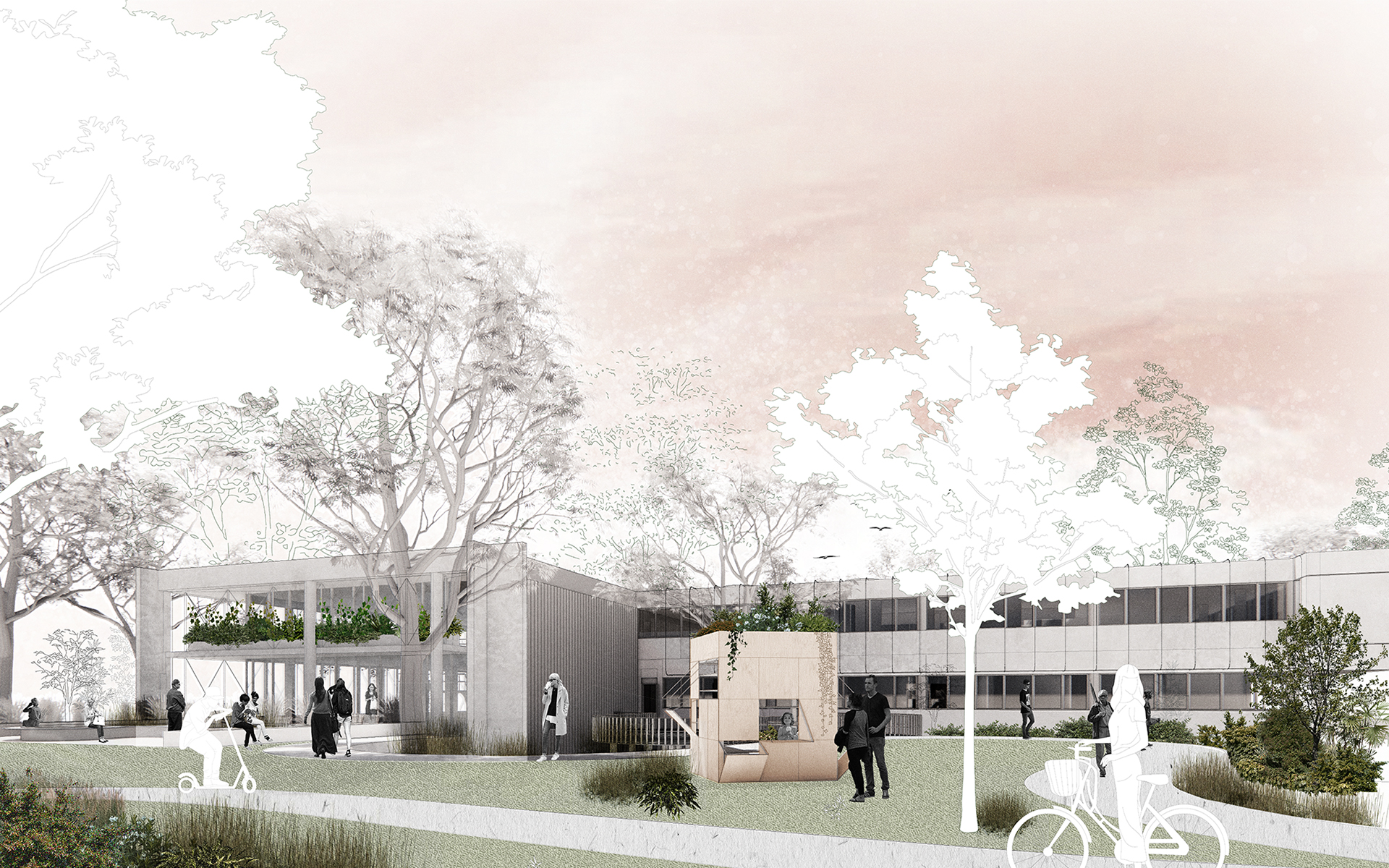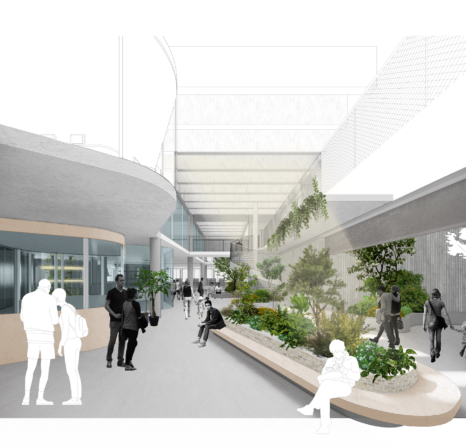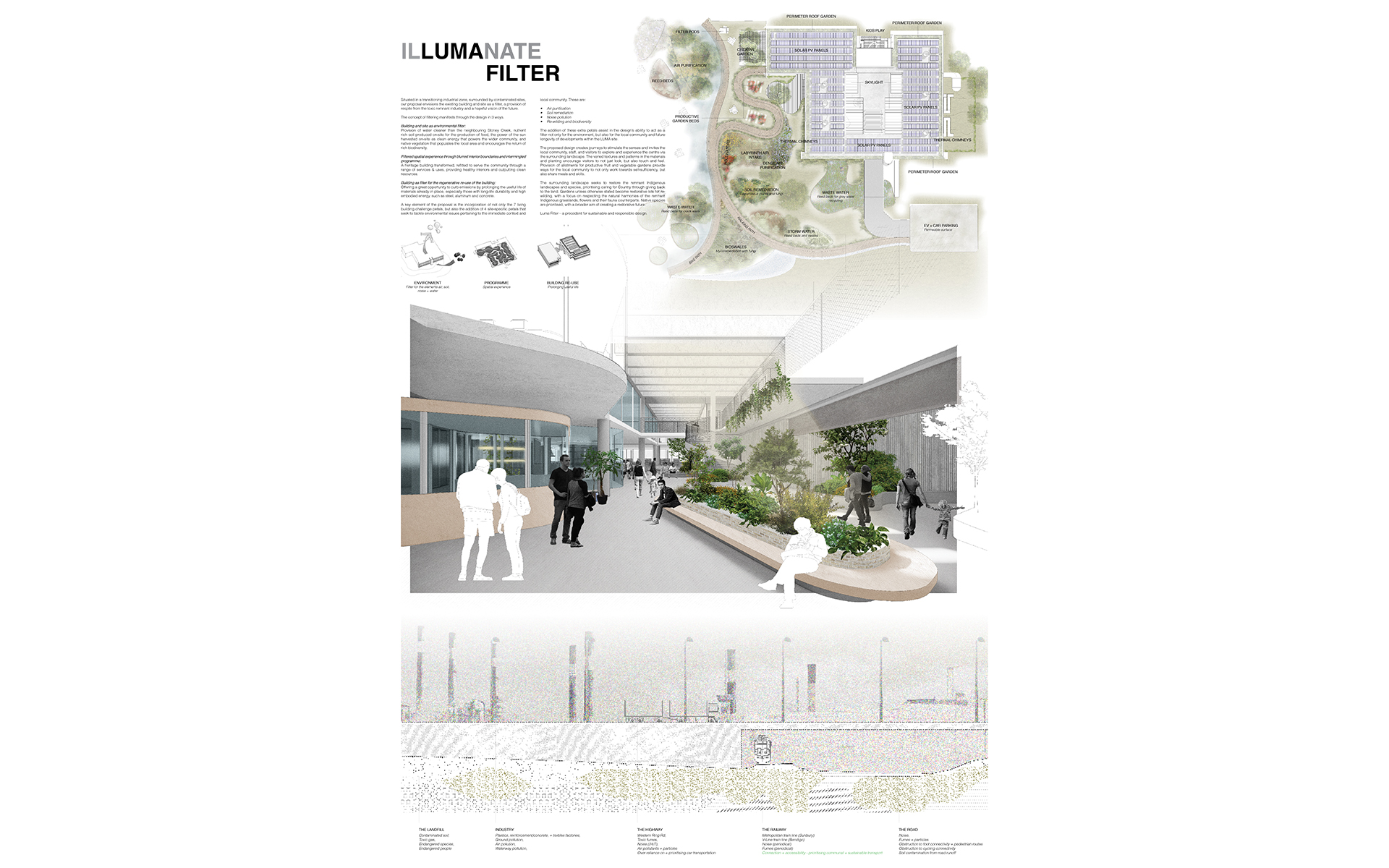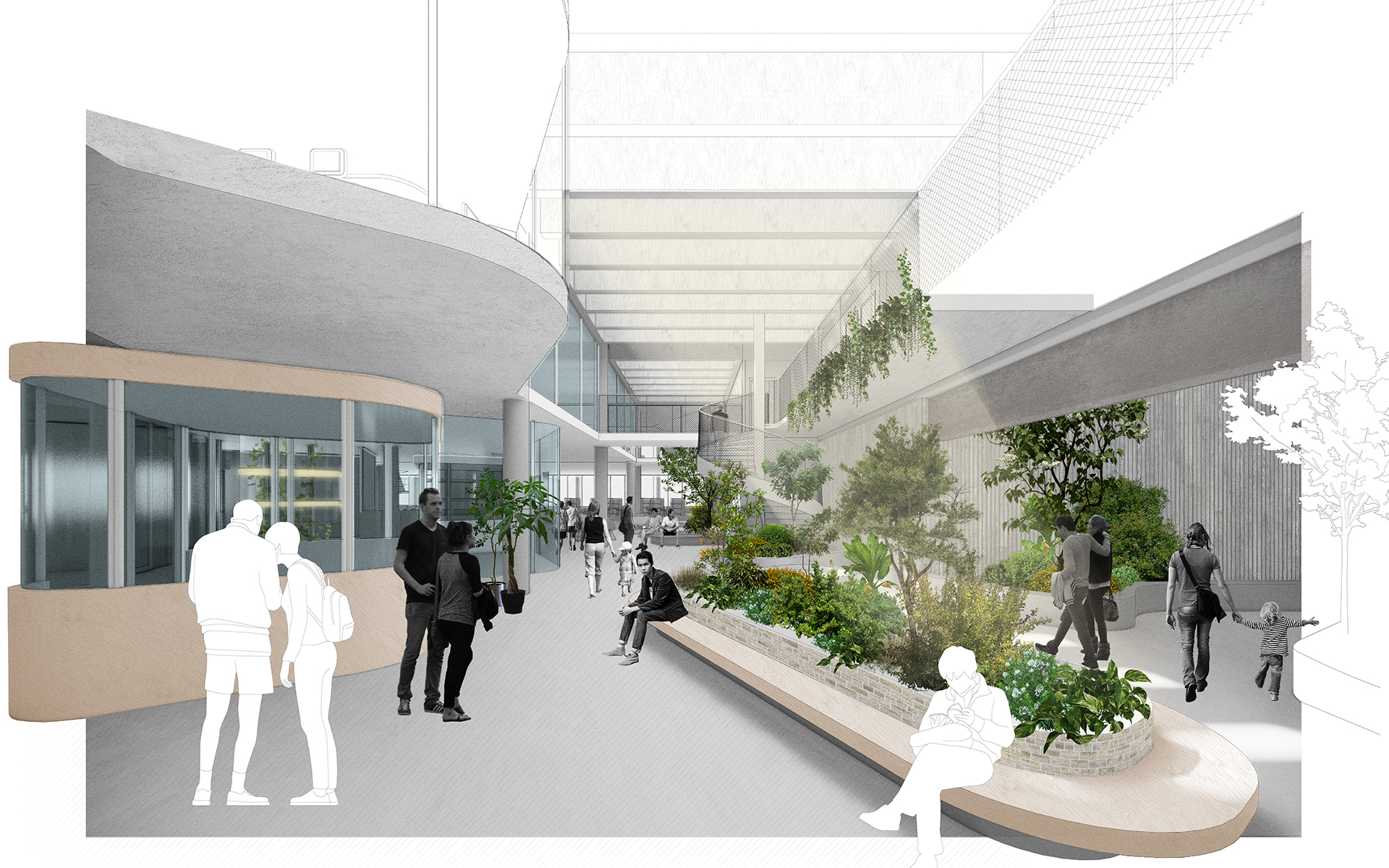The 2023 Living Building Challenge 'ILLUMANATE' asked participants to imagine what socially just, culturally rich, and ecologically restorative adaptive reuse looks like within the new mixed-use community known as LUMA. Designers were tasked with conceiving a repurposed heritage-listed building that can achieve the Living Building Challenge.
The brief for the competition was twofold; one, develop an adaptive reuse design that can theoretically achieve Full Certification under version 4.0 of the Living Building Challenge; and two, in doing so, design a facility that provides the local residents and broader catchment area with the community services they need. The outcome needed to demonstrate a mix of practicality, commercial viability, and exploration.
The site in question, the City West Water Administration Building and Depot Site, was built in 1972. An example of Brutalist architecture, the Complex has been included within the Heritage Overlay in the Brimbank Planning Scheme (H0149), with some elements of the building labelled as having either Primary or Contributory Significance.
Buchan’s proposal envisions the existing building and site, situated in a transitioning industrial zone and surrounded by contaminated sites, as a filter – a provision of respite from the toxic remnant industry and a hopeful vision of the future.
The concept of filtering manifests through the design in three ways: building and site as environmental filter; filtered spatial experience through blurred interior boundaries and intermingled programmed; and, building as filter for the regenerative re-use of the building.
This existing heritage building should play an important role in the evolving history and sense of a place as this new mixed-use community known as LUMA develops, its reuse keeps alive a connection to place and the community’s collective memories and experiences.
Our proposal considered the seven Living Building ChallengeTM petals: place, water, energy, health & happiness, materials, equity and beauty, and also the addition of four site-specific petals that sought to tackle environmental issues pertaining to the immediate context and local community: air purification, soil remediation, noise pollution and re-wilding & biodiversity. The addition of these extra petals assists in the design’s ability to act as a filter not only for the environment but also for the local community and longevity of developments within the LUMA site.
The design creates journeys to stimulate the senses and invites the local community, staff, and visitors to explore and experience the centre via the surrounding landscape. Varied textures and patterns encourage visitors to not just look, but also touch and feel. The surrounding landscape seeks to restore the remnant Indigenous landscapes and species, prioritising caring for Country through giving back to the land.
To address a fully sustainable and highly performing building façade, the proposed design removed the outer layer of north facing façade and introduced an external balcony environment with a new thermally broken glazed façade offset from the existing slab line. Deep eaves allow for strong passive solar design implementation; new planters and recycled mesh wire fencing encourage new planting to grow up the façade. This strategy ties back into the idea of air purification as the air crosses the vegetation before entering the building at the new offset façade line.
On the south side façade, the thermal labyrinth draws filtered air into the building prior to integrating with the HVAC system to reduce stress on the system. The proposal to extend the treatment of labyrinth walls up the façade is designed to educate and facilitate conversation around sustainable practices; allowing the building to physically communicate its sustainable principles.
Filter pods, consisting of a modular timber frame system and bracket adjustable shelving, address both issues of suburban biodiversity, whilst promoting a circular economy and self-sufficiency.
The preservation of the building retains a distinctive and important Brutalist architectural physical form, but reinterpreted through community activation and uses to demonstrate an exemplar regenerative building and landscape that connects occupants to light, air, food, nature and community. It will be self-sufficient and remain within the resource limits of the site as well as creating a positive impact on the human and natural systems that interact with them to provide for a range of community uses to support the new residential community of LUMA and the City of Brimbank LGA.
See an excerpt from our submission here or watch our animation below.
- Discipline | Architecture
- Sector | Civic
- Region | Australia
- Location | Wurundjeri Woi Wurrung Country Melbourne, Victoria






